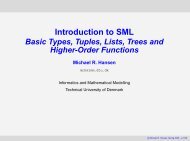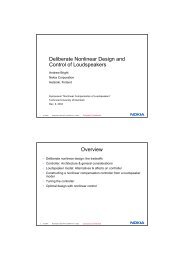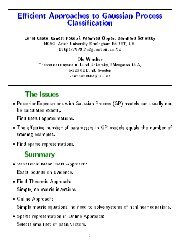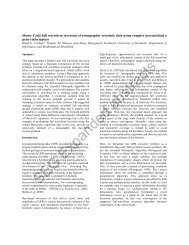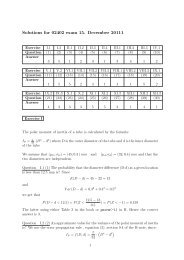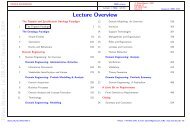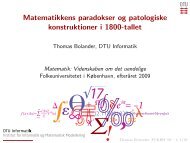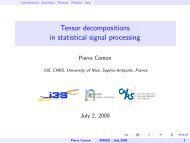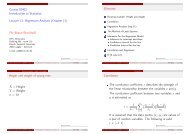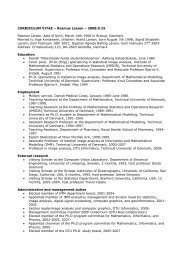Closure properties of regular languages
Closure properties of regular languages
Closure properties of regular languages
Create successful ePaper yourself
Turn your PDF publications into a flip-book with our unique Google optimized e-Paper software.
++*¤§)¢!*¦)£+*)¤£#¥¢©£©¤¨£¨£+¨#§¨!*¦)¤¥¤©£¥£¨£¤--¤¨+¢!* ¨,* ¨,*¤)*)*)¨¨£The pumping lemma for <strong>regular</strong> <strong>languages</strong>Thm: For each <strong>regular</strong> languagethat each ¥with1.,2. ¢,3.for eachIN.there is a constantcan be split intoIN suchsuch thatN.B.: Doesn’t imply that all <strong>regular</strong> <strong>languages</strong> are pumpable!All infinite ones are, however.Main use <strong>of</strong> pumping lemma is to prove non-<strong>regular</strong>ity <strong>of</strong> some¥!02140 Languages and Parsing, MF, Fall 2004 – p.5/8Non-<strong>regular</strong>ity — pro<strong>of</strong> recipeIn order to showto be non-<strong>regular</strong>, proceed as follows:1. Take IN arbitrarily (i.e., no constraints to be imposed fromyour side);2. Provide construction rules — obviously dependent onthe a word ¥with ¢.3. Take an arbitrary split <strong>of</strong>(a), and(b) ¢.intosatisfyingI.e., (a) and (b) are the only <strong>properties</strong> enforced.4. Provide a construction rule forIN such that,¤¢— for5. Prove that your constructions satisfy all their claimed <strong>properties</strong>( ¥, ¢, ¥), unless obvious.,¤02140 Languages and Parsing, MF, Fall 2004 – p.6/8¥.



